How Rooftop units or RTU’s work. As the name suggests, rooftop units, or RTU for short, are located on the roof of shops and small commercial buildings to provide air conditioning to defined areas.
Scroll to the bottom to watch the YouTube video tutorial
🏆 Learn more about RTU’S, Create your free Danfoss Learning profile by clicking here
Join Danfoss Learning and gain access to hundreds of online courses on a wide variety of engineering topics. It’s free to sign up and you can log on anytime you want, which means you can learn at your own pace. Start learning now.
Create your free Danfoss Learning profile – http://bit.ly/LearningRooftopUnits
These are package air conditioning units and they are popular because they are simple, compact, self contained, all in one, HVAC units.
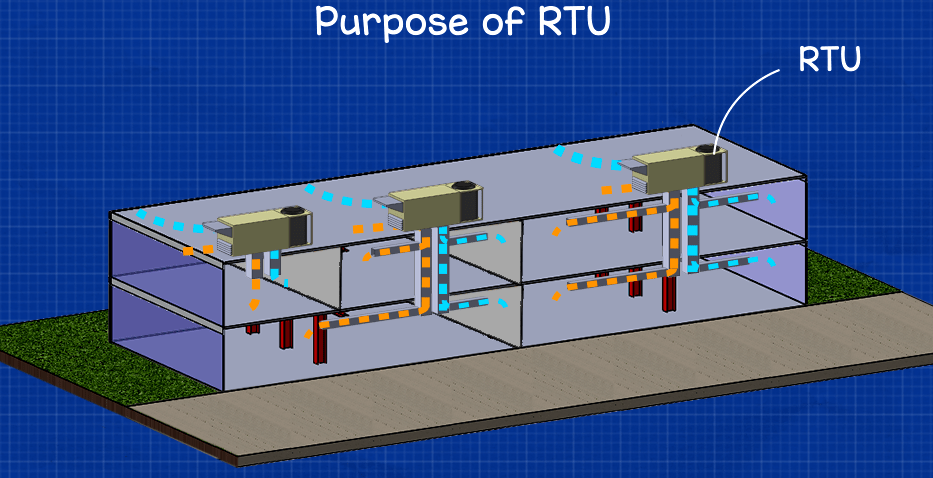
The purpose of a rooftop unit is to distribute conditioned air within define areas of a building. Rooftop units are connected to ductwork which provides a defined route for the conditioned air to travel along.
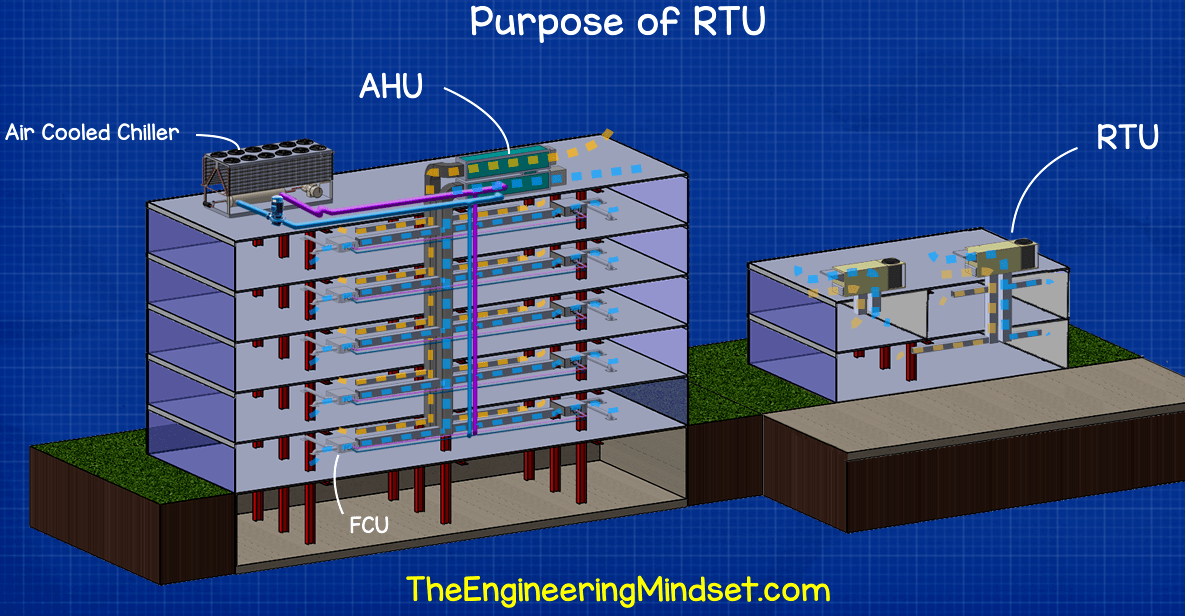
Now in our last tutorial we looked at air handling units or AHU’s. I would encourage you to check that out and watch the video tutorial, click here to view that. If you have watched that you’ll notice the units are very similar. Rooftop units are a type of air handler, the main difference is that they are usually more compact and they’re always installed on the roof so they need to be more robust and weather proof to deal with the sun, rain, snow, wind etc. Additionally, AHU’s will often be connected to central plant such as chillers and boilers to provide the heating and cooling, but RTU’s are self contained and have everything they need all in one unit. That’s why they’re called package air conditioners and we’ll look inside some model units shortly to understand why.
There are many types of Rooftop units, and we’ll look at four different typical versions, starting with the most basic. This first unit is fresh air only, no re-circulation occurs. It takes in 100% fresh air and conditions it. The return air is usually removed by an external exhaust fan to balance the air pressure.
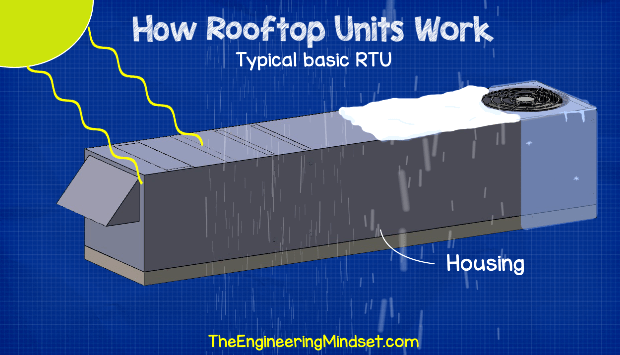
First we have the housing, this needs to protect all the mechanical and electrical equipment inside the unit from the sun, wind, rain, snow, frost etc. There will be some access panels built into this to allow engineers to access the components inside and perform maintenance.

At one end there will typically be an air hood. This is where the outside ambient air will be drawn into the machine. The hood is shaped this way to stop water, snow, and debris from entering into the unit. There will usually be a mesh across the inlet of the air hood which will prevent wildlife and objects from entering, as this will cause blockages and damage the fan.

The next thing we might find are some dampers. Not every unit has these but newer models typically do. These are basically sheets of metal which rotate together. They open fully to allow air to enter the unit or they close to seal the unit and prevent air entering or leaving. Some can vary their open position to somewhere between fully open and fully closed, this will be used to regulate the amount of air flowing into the unit from outside, especially if re-circulation is used and we’ll look at this later in the video after this basic model.
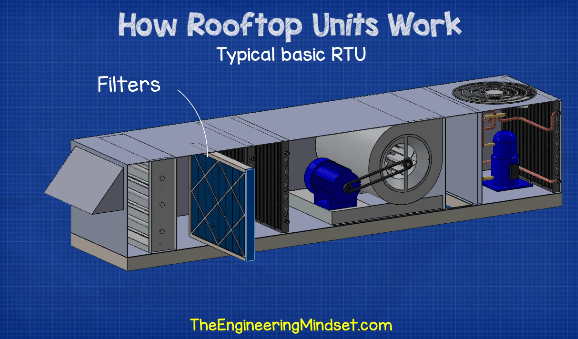
After the dampers we’ll find the filters. These usually slide out of the unit from the service door. Their purpose is to clean the air by capturing the dirt and dust which is contained within the incoming outside fresh air. If we don’t have filters installed then the fan, heat exchangers, mechanical components and ductwork are going to get slowly covered by the dust and its’ going to reduce the effectiveness and efficiency of the machine and if too much builds up it’ll cause equipment failures after a while.
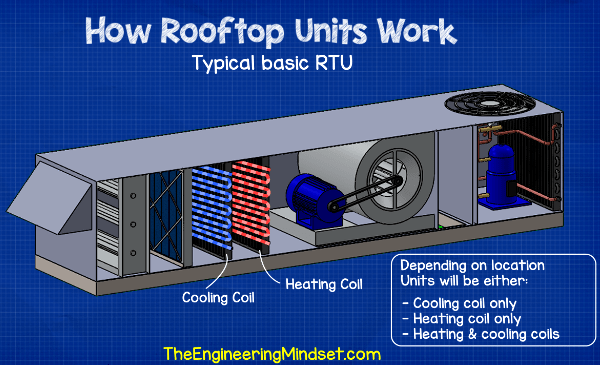
After the filters we’ll have some coils. These coils will be used to cool or heat the air by adding or removing thermal energy. Depending on where in the world the RTU is located and the ambient conditions it faces, some units will be cooling only, very occasionally they are heating only and some will be heating and cooling.
If the unit is cooling only then it will typically have a single coil connected to a refrigeration unit.
If the unit is heating only then it will be either connected to a heat pump, a gas burner or an electrical heating element.
If the unit is heating and cooling then it will either have two heat exchangers, where one will be a coil which is connected to a refrigeration unit to provide the cooling and the other will likely be a tube heat exchanger connected to a gas burner or an electrical heater to provide heating.
Alternatively a unit might provide both heating and cooling using a single coil which is connected to a heat pump. We’ve covered heat pumps in a previous video, click here to see that.
Most units will use a refrigeration system to provide cooling. The compressor, condenser, fan and controls are usually located at the rear of the unit or at the side to reject the heat and keep it away from the intake and the conditioned air inside the unit.
If you want to learn more about the different types of heat exchangers used and how they work, check out our other video on HVAC heat exchangers, by clicking here.
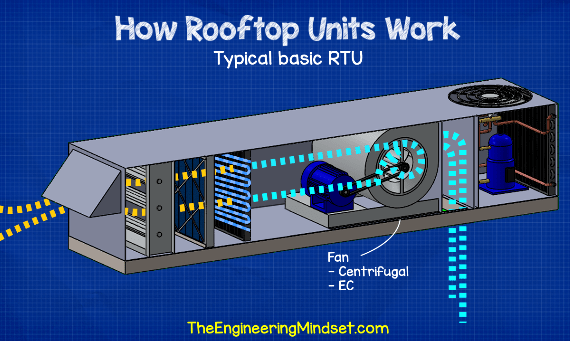
After the coils we’ll then find the fan. This is usually a belt driven centrifugal type fan but it can also be an EC type fan which are more energy efficient. The fan pulls the air in from outside then through the dampers, filters and coils and it will then push this into the ductwork to be distributed around the building.
That’s our most basic type of Rooftop unit. So what else might we find?
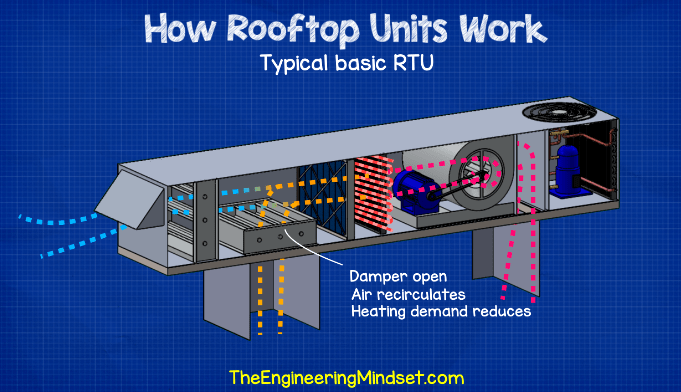
Some units might recirculate the internal air through a return ductwork system. This is used to save energy especially in winter when the outside air is very cold and the return air is warm. We can use this to reduce the heating load by mixing some warm return air in with the cold fresh intake air.
In this design we find a return air damper in the unit. This will work in sync with the intake damper and the two will vary their position to change the mixture of how much fresh air and how much return air is passing through the unit. There will always be a certain amount of fresh air entering in this type because otherwise the building will simply fill up with Carbon dioxide and create an unhealthy atmosphere. As the damper opens the suction of the fan will pull air in from the ductwork. When the damper closes no air will be drawn in.

Another version we’ll come across, and this type is very common. In this design we again have the return air damper, but this time some of or all of the air can be rejected to atmosphere. The temperature of the outside air and return air, and sometimes the CO2 level of the return air, will dictate how much air will be rejected and how much will be mixed and recirculated. In this type of unit when the outside air temperature is below or close to the desired indoor temperature, 100% fresh air can be blown into the building and none of it will be recirculated, all of it will be rejected as the cooling demand is met, this is referred to as free cooling cycle or an airside economiser cycle.

The final version we’ll look at has a heat wheel built into the unit. This is growing in popularity with the increasing need for energy efficiency in buildings to reduce CO2 emissions but also energy and utility costs.
This unit first pulls air in through the hood, the amount of air entering is controlled by the damper. The air then passes through a filter to catch the dust and dirt and protect the surface of the heat wheel, it then passes through the heat wheel. The heat wheel is a rotating heat exchanger which pickups the waste heat or coolth from the return discharge air and transfers this over to the incoming fresh air without the two air steams mixing. These heat wheels are not completely air tight so a little bit of air mixing will occur.
The heat wheel is used to offset the heating and sometimes cooling demand when conditions are right, saving energy and utility costs. After the heat wheel the air flows through another filter. Just before the filter we have a damper on the return air stream. This allows us to recirculate some of the return air into the fresh air and the quantity is varied using the dampers. Not all heat wheel rtu’s will have this feature some only use 100% fresh air intake and extract. If it doesn’t have the option to recirculate then the unit probably wont have this second filter bank.
After this the air will flow through the heat exchangers which heat or cool the air to the desired temperature.
The fan will then distribute the air through the building via the ductwork to the designated locations.
The return air is then pulled back into the RTU through the return ductwork. Once it re-enters the RTU it has the option to either recirculate some air back into the fresh air intake, otherwise it will all pass through a filter and then through the heat wheel to capture the waste heat.
After the heat wheel we might find an extract fan otherwise the pressure caused by the main supply fan can be used to force the air out, in some designs.
The air then passes through the extract damper which is used to vary the volume of return air mixing as well as the pressure inside the building, after that it passes through a grille which just stops objects and wildlife from entering the unit where it will then be ejected from the system into the atmosphere.

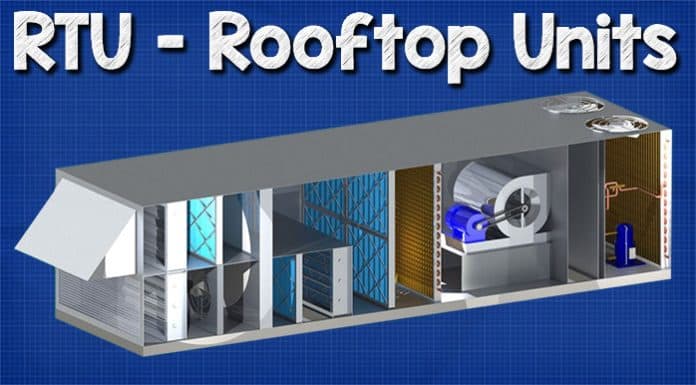
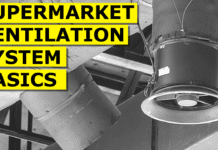
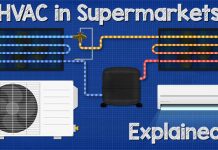
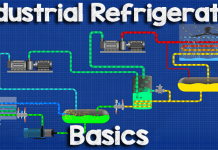
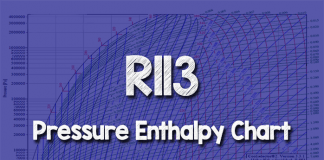
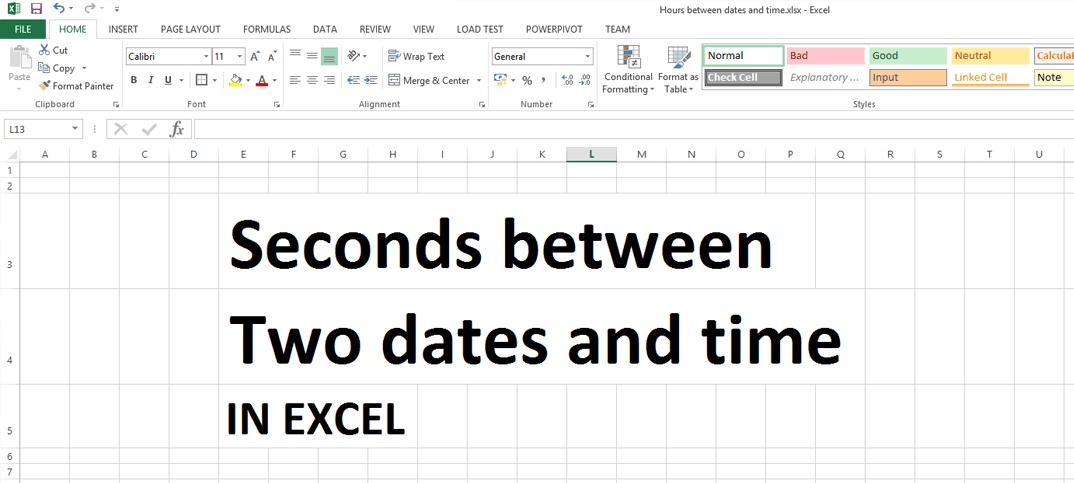
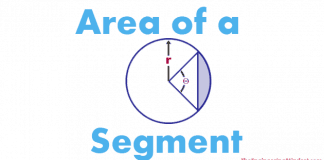

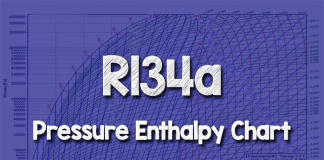

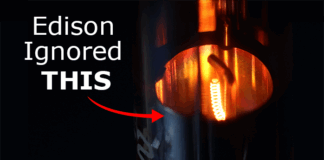







Thanks a lot. Really I reach a valuable source of information from you.
Can you name some manufacturers that make rooftop units with a heat pump for heating ? If you can post the actual name of the product with the heat pump mode (Eg: Daikin Rebel) that would be good. Thanks a lot !
One thing not explained was why the second fan on top of condenser? Only the drum fan was explained.
Good stuff, only it said there were 4 different types, and Only 2 we’re described
[…] What do rooftop units do? […]
What is the difference between the leaving air temperature of a DOAS unit and an RTU?